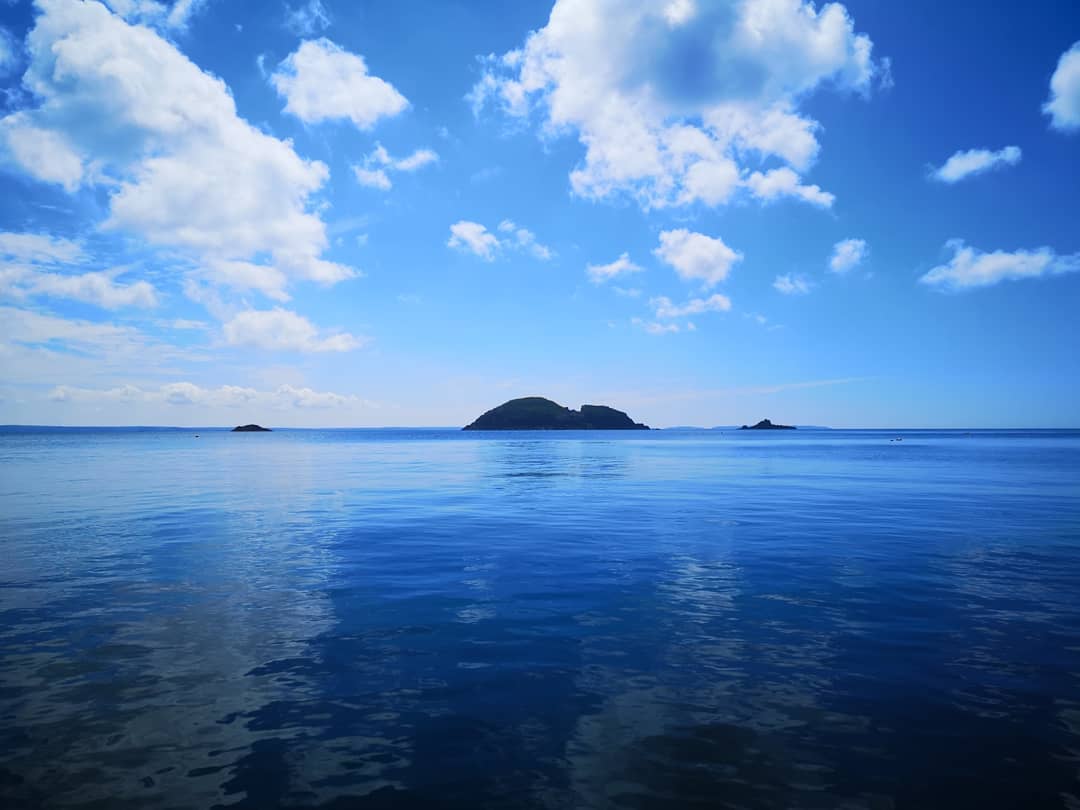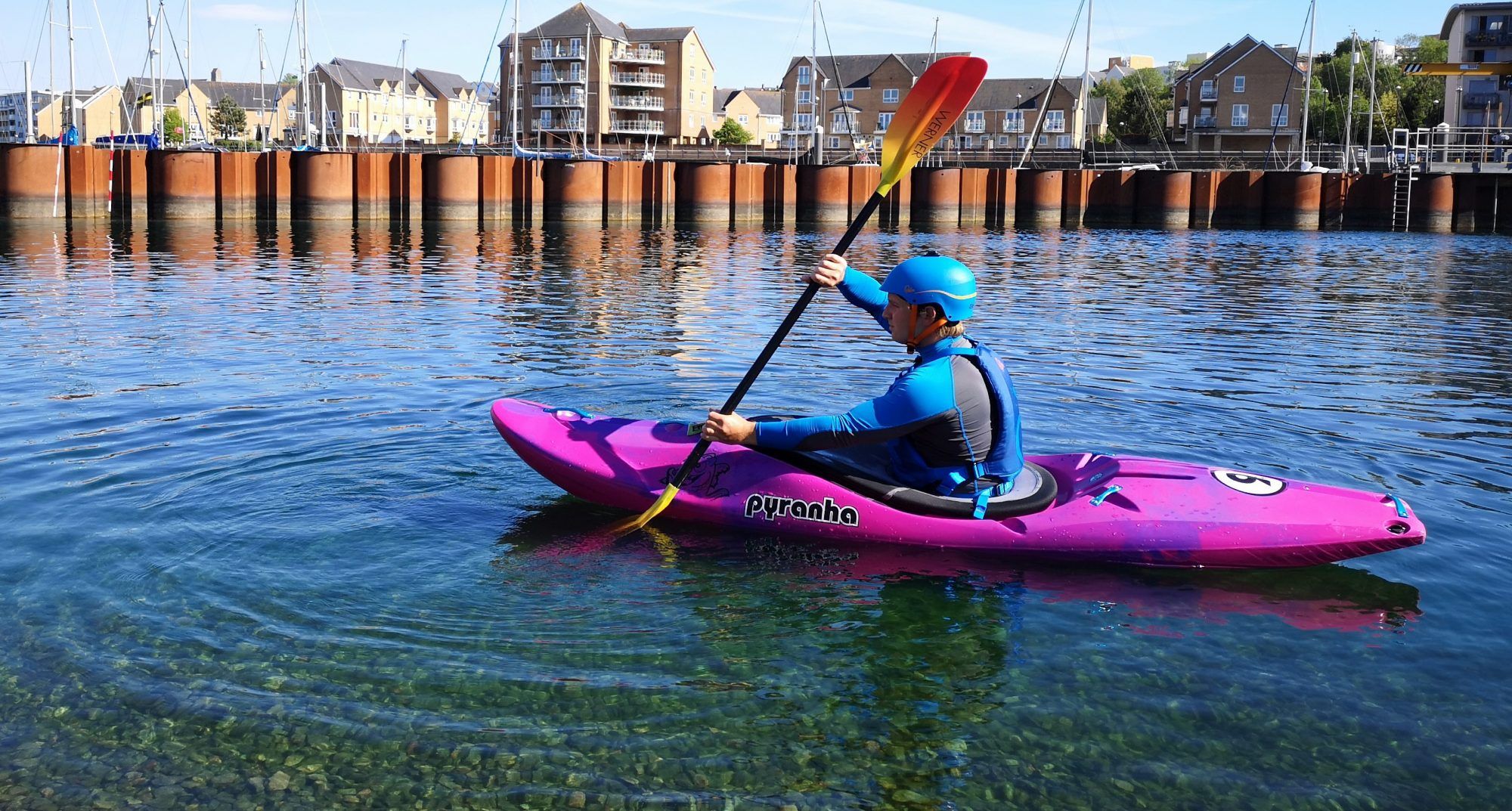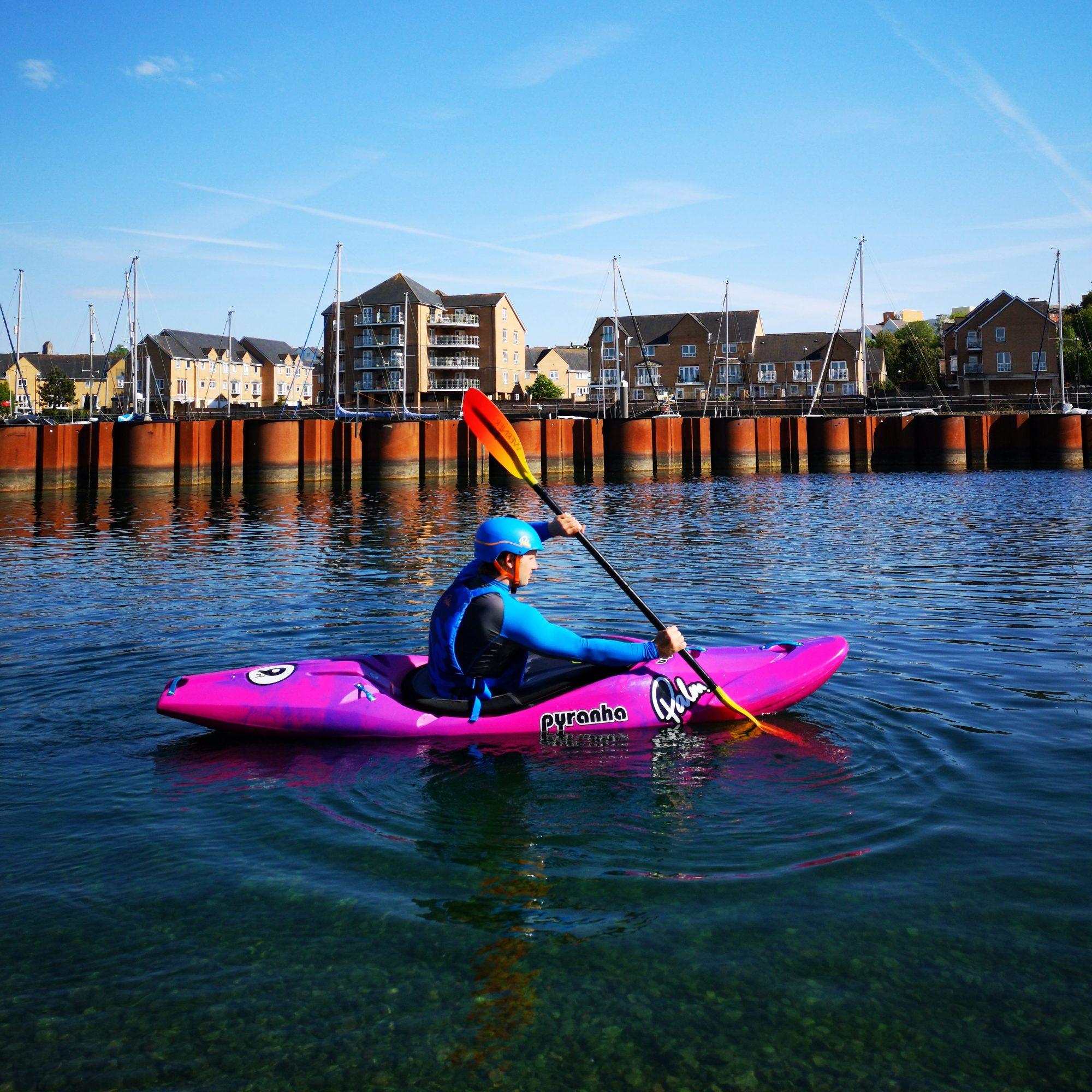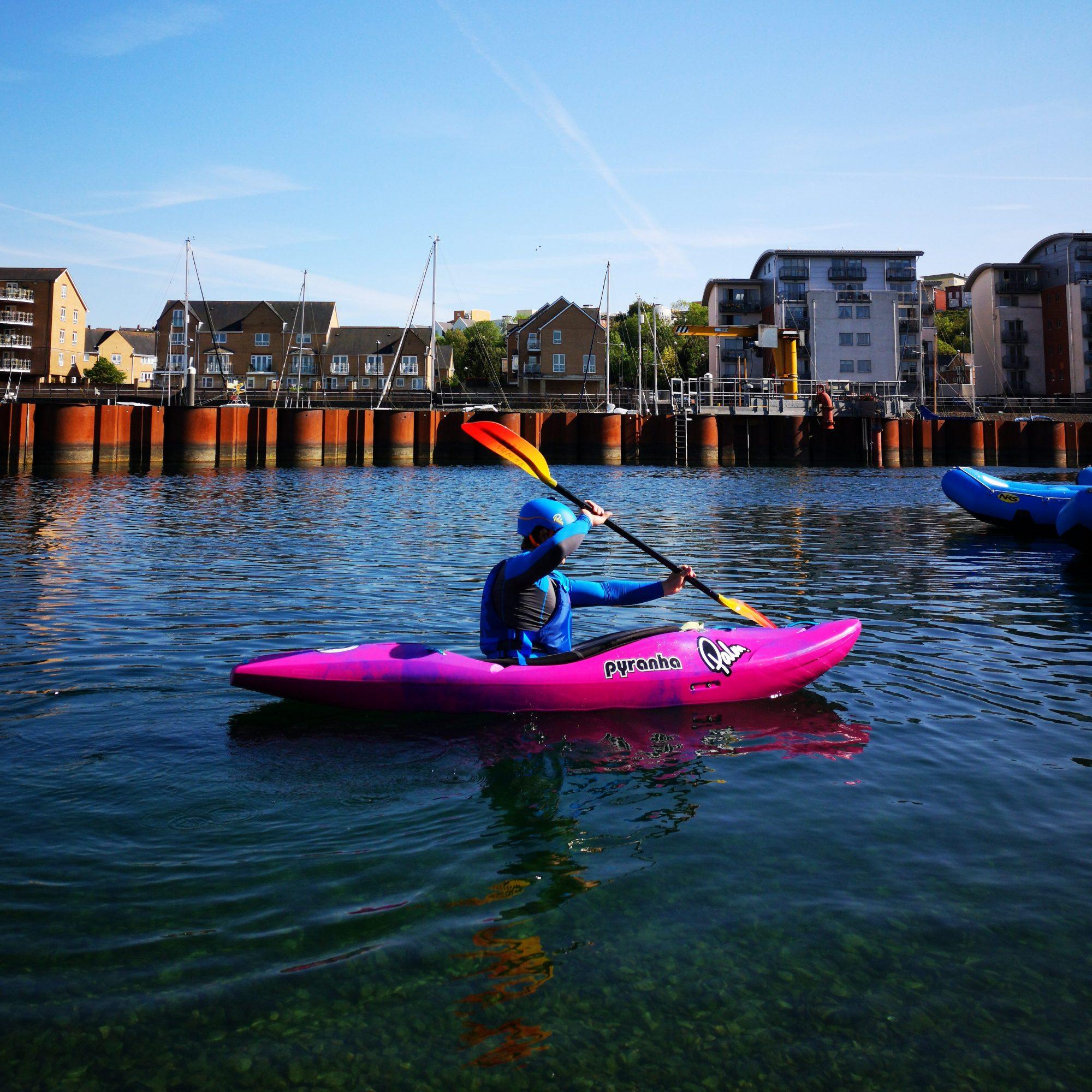Paddling forward (or trying to) was probably the very first thing you did in your kayak. But paddling forward is not something you learn once and never think of again, instead, it’s something to train whenever you go paddling. Here are my five top tips to picture-perfect forward strokes!

Keep your eyes on the prize!
I was taught this as a young paddler on the Graveyard rapid of the Tryweryn in Wales, a rapid named after the profusion of obstacles!
‘Where you look, is where you’ll end up’
Never underestimate the power of your head, it has so much influence on where your kayak goes! It’s a common habit to focus on the nose of your boat, or look side-to-side at your blades as you plant each stroke. Both of these habits make you lose track of where you’re headed.
Instead look at where you are going. This applies equally your first strokes in a kayak to threading your way down the burliest of rapids. And it’s equally easy to get distracted!
By focusing on where you are going, you will have a better awareness of the angle of your kayak and, if you need to, make any adjustments. Over time these micro adjustments will become automatic and you may not even notice you’re doing them.

Sit up straight
Good posture will help. It helps you reach for paddle strokes, helps your strokes become efficient by engaging your core muscles and keeps your body in a position from which you can be dynamic (easily move to a new position).
Sit upright and slightly forwards. This should feel relatively natural so if it feels like you’re too far forward, drop it back a little, you may have overdone it. Your backband is there to support you, not to take your weight. So don’t lean forwards and then crank your backrest up behind you!
It’s common thing for beginners or people who struggle with their core strength to adopt a lazy-boy position, leaning back. This disengages your core, making you unstable and unable to paddle efficiently. Leaning back on the backrest may also engage parts of kayak that will make going straight challenging!
Good posture will become second nature given time and practice, so be aware when you are slipping back into that lazy-boy position!

Paddles up!
No, I’m not talking about the amusing old TV program, I’m talking about the angle of your paddle! It’s certainly not just beginners that are guilty of this one, most of us slip into this sloppy habit, especially when tired.
When your paddle angle drops low, you lose power and efficiency from your strokes. A low paddle angle is what you use to turn your kayak, so if you’re trying to go in a straight line, this isn’t ideal!
A vertical paddle stroke will drive you forwards to our destination efficiently. One way to think of it is – trying to stack our hands on top of one another. If one hand is stacked straight above the other (or thereabout), you know you are achieving your vertical strokes.
Rotate, extend, contract
Another foundation for paddling excellence! Shoulder rotation is very important for efficient paddling, not just your forwards strokes.
As you take a stroke, about to spear your paddle into the water, your shoulders rotate toward your top hand, punching forwards. This extends your reach. By rotating you are able to reach further and move your paddle further each stroke, gaining more power. It also engages your core, stretching out your lats so they can really contract and pull, and engaging your obliques too, transferring energy through your body making you more powerful and saving energy!
People too often paddle with just the use of their arms, which is very tiring and prevents them from making dynamic moves. If you’re getting into racing or doing long days on the river, getting a good core and shoulder rotation, extending and contracting every muscle in the chain is a good habit to get into!
To repeat the theme of this article – I’m guilty of letting my technique slip when I am tired, so I check myself every so often.

What do I do with my feet?
Are your feet just along for the ride? Sometimes my hip pads are too tight and I can’t feel them anyway! The truth is, you absolutely should be using you feet when you paddle.
To transfer energy and power through your body from your paddle strokes to your boat – tying all the elements of good forward paddling together into picture perfect paddling, you need to use your legs and feet too.
Next time you plant a stroke, as you pull on that stroke, put some pressure with your foot on the footrest, on same side as the stroke. And I mean a relatively small amount of pressure, if you’re making weird facial expressions, it’s too hard! This means all the tension and power from your shoulders reaches the boat, and isn’t wasted on a floppy link in the chain. Your whole body is pushing and pulling against itself, the water and the boat to keep you upright and moving. Efficient forwards paddling!
Just the tip of the iceberg, there are so many ways to improve your forwards paddling and you can (and should) spend a paddling lifetime improving – but these are certainly my top five tips to really help you with having a good time on the river and help you to progress!

